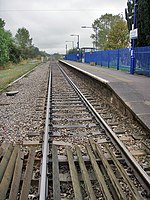Ascot d'Oilly Castle is situated north of the village of Ascott-under-Wychwood in the north west region of Oxfordshire. It is a scheduled ancient monument. A fragment of the castle remains and is a Grade II listed building. It was named after Roger d'Oilly who was granted it by William the Conqueror and whose brother built Oxford Castle. It is thought that the castle was built around 1129 and it was demolished soon after 1175. There are fragmentary remains of a stone tower. The remains consist of raised ground surrounded by broad ditching.Today the motte of the original castle survives as a mound, around 32 metres (105 ft) wide and 3 metres (9.8 ft) high. The ruins of the keep are situated on top of this mound in the central 20-metre (66 ft) area. It was excavated by Martyn Jope and R. I. Threlfall in 1946–1947 and then in 1959. Excavations carried out in 1946–1947 not only unearthed a number of important artefacts such as 12th-century shelly ware pottery, they also showed how earth was piled up around the outside of a square tower for fortification i.e the castle was built on ground level and then the clay mound, that survives to date, was built around it, instead of the castle being built on a raised mound from the start. Only traces of the tower remain and they suggest that it was about 11 square metres (120 sq ft) with walls 2 metres (6 ft 7 in) thick.The castle is very close to the fortification of Ascott Earl Castle, built on an adjacent estate at the other end of the village. These two castles are considered unique, as they are in close proximity, being only 550 metres (1,800 ft) apart, yet they have never been used in armed struggle against each other. The castle is also very close to Leafield Castle with it only being 2.7 miles away. It is possible that these two fortifications are linked with the shared defence of West Oxfordshire.











